Good day! If you are here at Studio Botanica, chances are.. you like or love herbs and infusing herbs into your life! My passion is alive and well always--- and never more than when warm weather comes... and my tiny garden space here in Toronto, becomes my focus and my love affair with growing herbs takes on a life of its own! I grow many herbs in my tiny garden. They all get along for the most-part! I thought I'd share my picks for the best medicinal herbs for your culinary garden ~ and share a little about what you can do with/how you can use them and why.
There are so many herbs to grow, aren't there?
There are MANY herbs. It was really hard to choose my top 10 medicinal herbs for your culinary garden!
I promise to add more to this list of favourites but I thought it would be fun to write a little about each one for starters. Medicinal as well as Culinary herbs together make a great investment in time + money spent.
Bonus: See below for information about my friend Anna's wonderful eCourse!!
My TOP 10 Medicinal Herbs for your Culinary Garden:
Basil
Sweet basil (Ocimum basilicum) is an aromatic annual with a spicy taste. Plant size ranges from small to large, and the leaf colours range from green to purple. Basil grows well in my southern Ontario garden and makes a delightful potted plant too. By mid-summer, I have several pots of different basils around my home. It's an addiction! Basil is more than a culinary herb. Here's a post with some 'basil benefits'
Basil leaves may be used fresh at any time (or dried, on occasion and in desperate times!) I try to preserve fresh basil during the growing season to ensure lots in the 'off season'.
I purchase a few Basil friends each spring. Last year I grew sweet basil, opal basil, Thai basil, Cinnamon basil and for the first time, lemon basil. I cannot pick a favourite. SO delicious. I made herb pastes and pestos with all except Cinnamon basil (which infused some raw honey!)
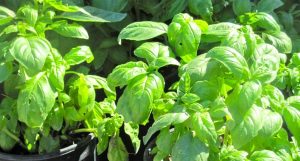
Here's what I do to grow Basil, from seed, for starters -- this is me sharing what I do. I am NOT the expert re seeds starting... this is my own simple 'to do list'
Basil can be started indoors and then transplanted outside later.
Start basil seeds indoors 6-8 weeks before last frost (Believe it or not.. that's about now for me)
Drop a few seeds into each cell (or tiny pot) to ensure germination.
Cover the seeds with a slight soil cover and dampen soil with a light watering.
Cover with a plastic top and place in a sunny location, to speed up germination.
Water twice a day and remove plastic top when seedlings emerge.
When 2 sets of leaves emerge, basil can be transplanted into the garden.
Pinch off the top 2 sets of leaves once the basil plant reaches reasonable height.
My mom taught me this -- she used to say that this 'pruning', encourages a much higher quality plant.
Cilantro/Coriander
Coriander (Coriandrum sativum) is a small-leaved flowering annual, often grown mainly for its aromatic seeds. The fresh green plant, also known as “cilantro,” is a wonderful medicinal herb which finds its way into many meals at home.
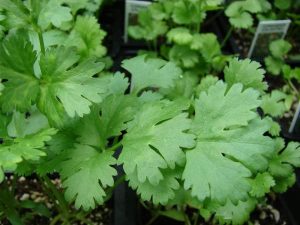
When the tiny fruits turn brown—about three months after seeding— we can remove them and dry them on a screen.(I've also used the back window area of my car on some parchment paper, when not using the car for a 48 hours period!) Once dried, thresh the seeds and store them in a dry, airtight container. Coriander seeds have medicinal uses too. Both the seeds and the green part, called cilantro, are valuable medicinal allies. Check out this post to learn more about this wonderful herb, which is one of THE most common herbs worldwide!
I make pesto with cilantro and its a favourite part of summer!
Dill
Dill is an annual, self-seeding plant with feathery green leaves. I think that the best way to grow dill is to 'sew seeds right into the garden', rather than from a transplant. Planting dill seed is easy, just scatter the seeds in the desired corner of the garden after the last frost, then lightly cover with soil.
I tend to sew seeds every 2-3 weeks for a constant supply of fresh leaves, beginning when the temps are around 18 °C (around 65°F) Seeds should germinate in 10-21 days. Tip: Don't plant near carrots.
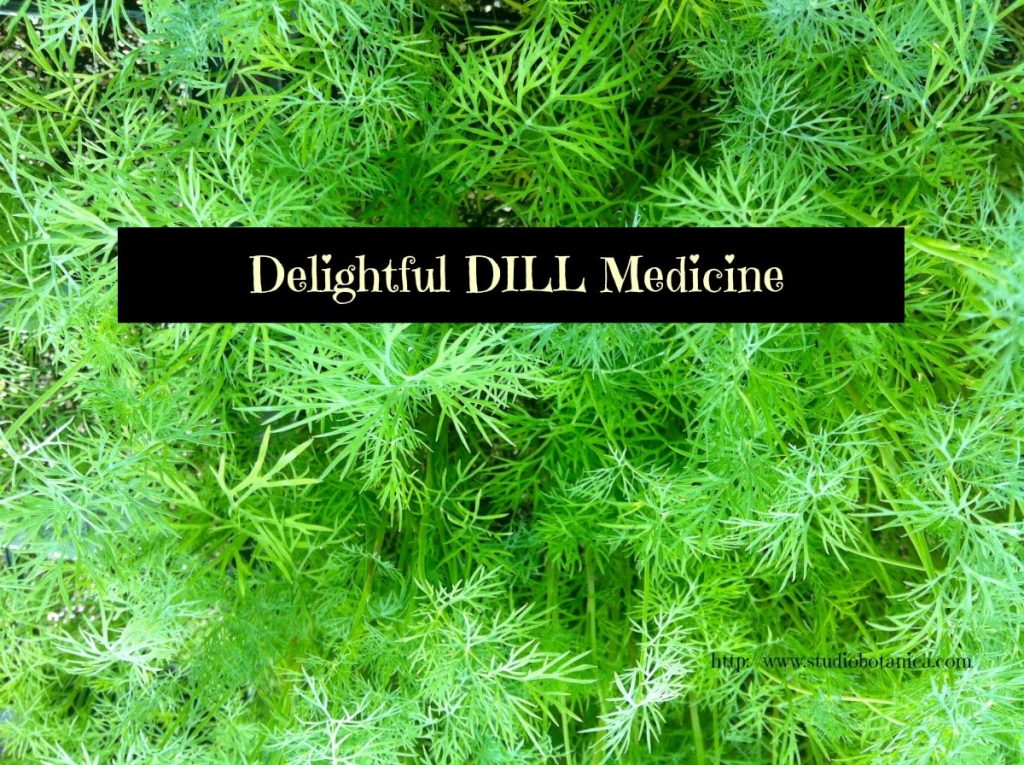
The weather in summer in Toronto can be very hot at mid-day and dill tends to 'bolt' so I need to plant a few times over the 'season' to ensure good dill leaves for my favourite cucumber dishes! Here's a post: DILL Medicine with WHY it's wonderful to use dill often and some recipes.
Fennel
Fennel
"There are two main varieties of Fennel. One, developed mainly for production of Fennel seeds, is called Sweet Fennel ("Foeniculum vulgare var dulce"); the other, developed for eating in its own right, is called Florence Fennel ("Foeniculum vulgare var. azoricum.") Sweet Fennel is treated as a perennial and left in the ground to produce seeds. Florence Fennel is treated as an annual, with the entire plant being pulled out for eating."(source)
I have always bought a young 'sweet fennel' and tried to find a good hot spot in my tiny garden. (Thanks Anna for helping me to realize that there are several varieties of fennel-- Anna knows herb growing, I'll tell you!)I have an idea this year for a new location, in a drier area of my backyard. Keeping my fingers crossed! I make fennel seed tea regularly and recommend it often to my clients. Here's a post about the benefits of fennel.
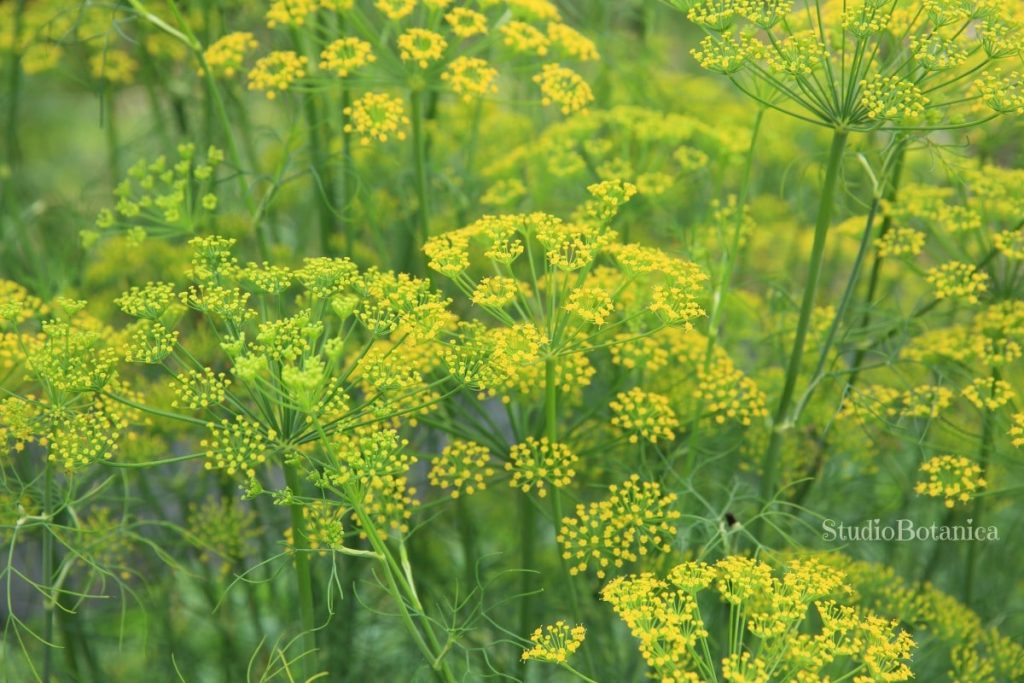
Fennel (Foeniculum vulgare) in my garden
A family favouite salad using fennel bulb (from Florence fennel) is SO good. Here's that salad recipe.
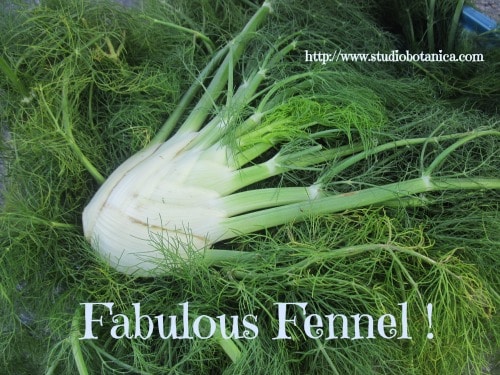
Lemon balm (Melissa officinalis) is a lemon-scented perennial in the mint family which grows in small clumps. I happily await new 'baby lemon balms' every year and love to pot them up and give away as gifts to friends to encourage more lemon balm and more gardeners! The leaves and tender stems are an important part of my apothecary and I have many medicinal applications. I have written about lemon balm (or missy Melissa, as we call her) here.
She can be enjoyed fresh or dried to add flavor and aroma to salads, teas or cocktails. My favourite "Lemon Balm roasted potatoes" is a MUST MAKE! You'll find the recipe here. If nothing else about my love affair with lemon balm doesn't make you start to grow this herb, this recipe will do it!
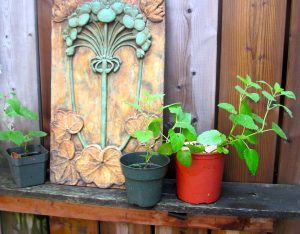
Mint
The mints (Mentha) are perennial herbs that grow easily in most areas. Spearmint (Mentha spicata) and peppermint (M. piperita)as well as citrus mints and apple are my favourites. The leaves and flowering tops are used fresh and dried. Mints do well in light shade or in full sun. The only cautions one hears about mints? Dig down and put the plant into a big pot in the earth, in an attempt to control the spreading rhizomes! I have peppermint in my shade garden and the others in a specific "mint barrel" to keep them 'in check'! Mmm I have a new friend "Orange Mint" which I have over-wintered and am thrilled to say miss Orange is thriving! Stay tuned for my adventures with this aromatic!
Benefits of Mints are many. Here's a post that shares a yummy recipe and some of the reasons to embrace mint as a plant ally.
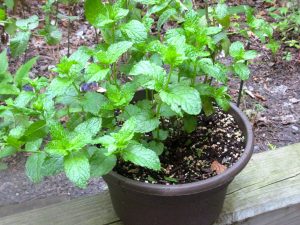
There are many types of oregano: Greek (Origanum vulgare, Subsp. hirtum) is sometimes called ‘wild marjoram’. It is the standard culinary oregano that is most commonly commercially marketed in dry form for spice racks. Tiny white flowers appear in summer. This one is easily grown in average, dry to medium moisture, well-drained soils in full sun. I have never grown it from seed as this annual is available from my favourite organic gardener "Urban Harvest" in Toronto. There are shortcuts needed in my life at times. (Can you relate?)
Sidebar: Mexican oregano (Lippia graveolens) has a stronger savory component with a pronounced citrus accent. I am on the hunt for Mexican oregano this season!
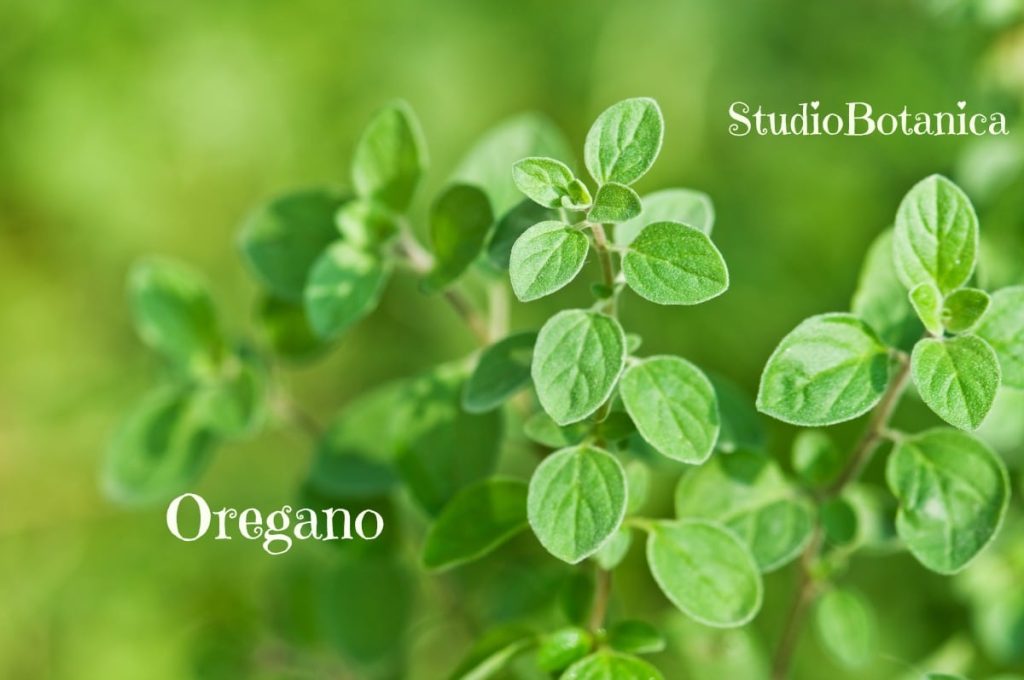
Rosemary
Rosemary (Rosmarinus officinalis) is a hardy perennial evergreen shrub with a very spicy aroma. Small pink flowers form in the second or third year. I make a fresh tincture with Rosemary and she is an important herb in many of my apothecary formulas. Here's a post called Rosemary Medicine with her benefits. She is a forever member of kitchen medicine and included in many recipes, fresh or dried. I make hair rinse with Rosemary and actually have many projects over the year with this special plant. I promise to write up some when time permits!
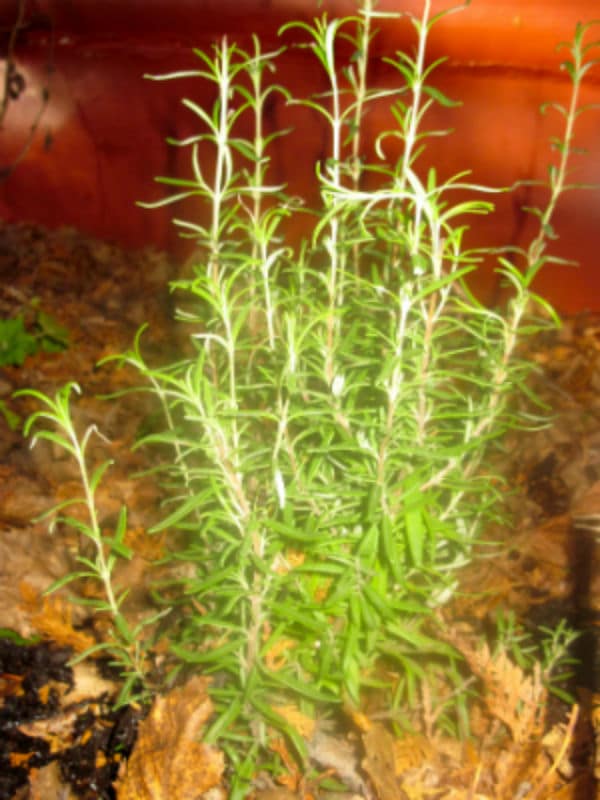
Sage
Sage (Salvia officinalis) is a medium-sized hardy perennial with grayish-green, oblong leaves. Purple flowers bloom in the second year. The leaves can be used fresh or dried. I grow as much Sage as my garden can handle and raid friends' gardens too. I use a lot of sage in our Canadian winters! I buy sage every Spring in the last few years as I've not been able to overwinter one in a while. I am going to try to grow a big mama this year and attempt to over-winter next season.
Sage is excellent as a sore throat remedy, but also immune-supportive as well as an amazing 'hot flash' treatment for peri-menopausal women. Sage is SO much more than an ingredient in turkey stuffing! Keep sage in mind for some of these reasons.
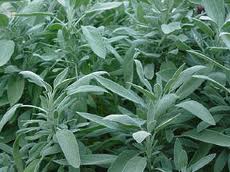
Thyme
Thyme (Thymus vulgaris), a shrubby perennial, is found in a fairly wide variety of shapes and sizes. I love this small-growing plant with sweet purple flowers at the ends of the delicate stems. I use fresh thyme tincture or in my meals.
I dry thyme to enjoy all year long! Here's why I love thyme.

To dry thyme, remove the top third of the plant when in full bloom and spread it on newspaper in a well-ventilated room. When the plant is dry, strip the leaves and flowering tops from the stem and store them in tightly closed containers. In my herbal practice, I tincture fresh thyme and use it in several concoctions at harvest time. I do snip it all summer and add it to many dishes. Thyme is a terrific companion to mushroom meals. Here's a link to one of my favourites.
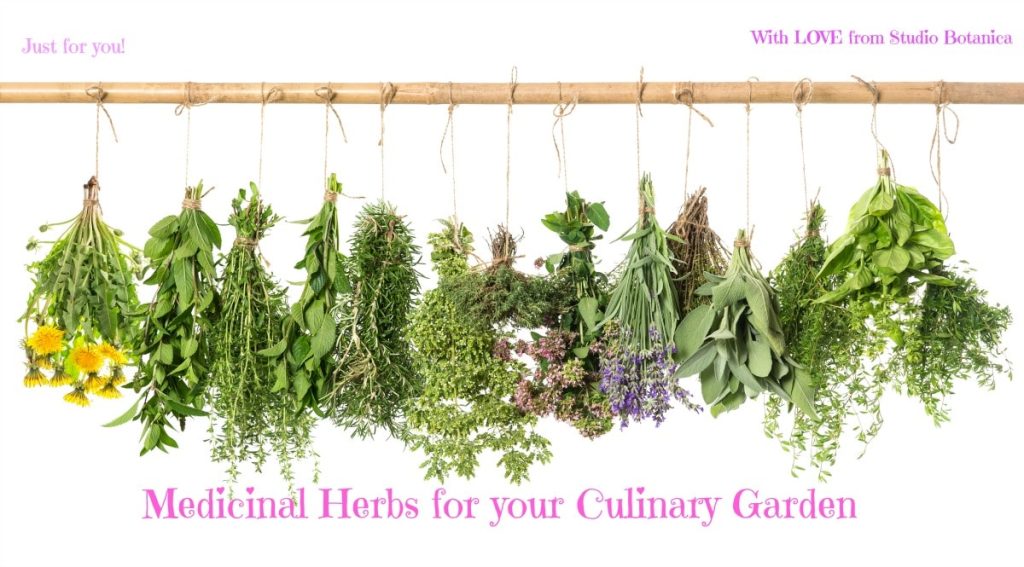
My friend Anna Hackman, avid herb gardener, has created an eCourse for us !
Do you want to learn more about growing herbs from seed? This is not my expertise so I am excited to learn from Anna, who has been growing delicious + delightful herb gardens for 10+ years!
Save $$ and have fun with this one!
Do you buy plants or seeds? Are you an avid gardener?
Do you intend (as I do) to do 'the seed thing' but never get around to it?
Anna Hackman, is head mistress over at Green Talk and owner of The Naked Botanical (where she sells herbal goodies via Etsy shop!)
We CAN correct failed attempts from past years. We can grow medicinal herbs for your culinary garden and have it all! Eat 'em. Make remedies with 'em. Use 'em!!!
I am so excited to share this course. The idea of growing medicinal herbs for your culinary garden will be easier than ever! Have a look here and please tell Anna that Carol sent you!
Anna walks you through from the time you start buying your seeds to when it is time to plant them in the garden. Generally that it is an 18 week period but the course focuses on the 14 week period from sowing your seeds. There are numerous videos, content documents and some PDF/spreadsheets for you to use.
Remember a seed packet cost $4 for 50-100 seeds. An organic plant can cost $4.
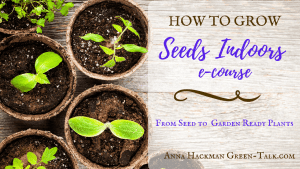
May you be happy + filled with hope.
May you have the blessings of an herb garden ~ whether it's a simple pot or an acre in size !
Green wishes, Carol ox

Do you grow medicinal herbs for your culinary garden?

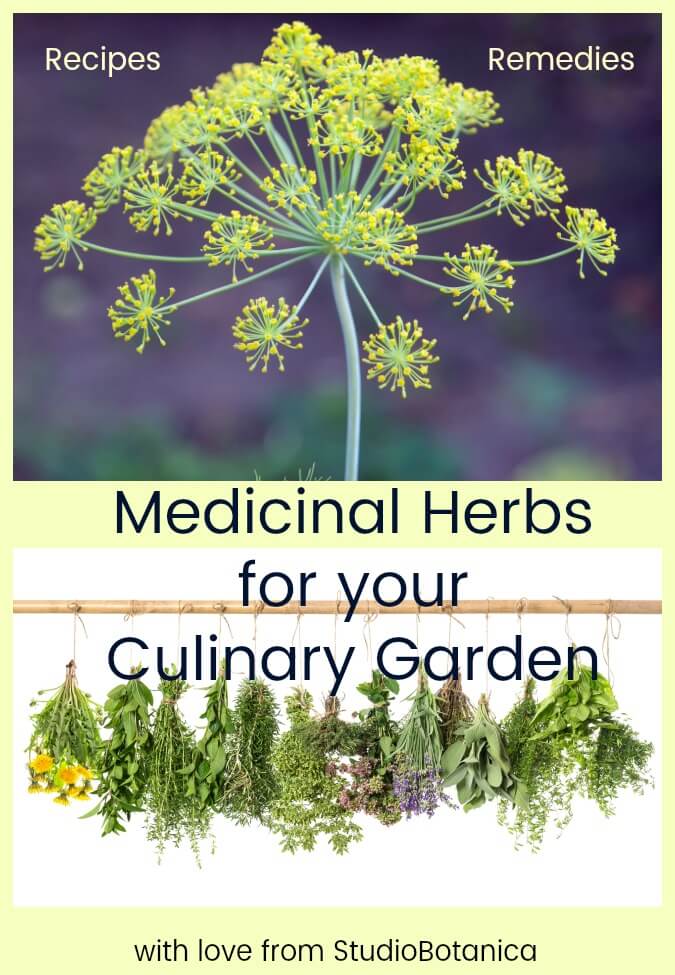

lynn
I'm looking for winter savory. Any suggestion on where to find seeds?
Carol Little
Where do you live Lynn? This makes a difference when looking for seed sources..
USA, Canada, UK? Spain? If you share your location, I'll send along some ideas!
email me if you prefer.
Raia Todd
Love all of these! Some are harder for me to get growing than others, but my sage plant is complete a monster taking over everything. Haha!
Carol Little
SAGE !!! Please make sure you harvest often and dry for amazing tea!!
Shelby @Fitasamamabear
Our absolute favorite to grow is mint! |My 2yo eats it right off the plant, she loves it lol
Daniela
Ooooo I love this post Carol! I want to add herbs this spring to my garden! I'm bookmarking this article!
Carol Little
SO glad to hear! There are so many mints! Try some other varieties. Even my fave Lemon Balm is a mint and very 'pick-able' !!
Lindsey Dietz
I love cilantro in dishes, but have never used it medicinally! Great info!
Anna @GreenTalk
Thank you so much for sharing my course. I have been growing herbs from seed or root cutting for over 10 years. Love herbs!
Carol Little
SO excited to learn from your course and correct some of my mistakes to make me a better herb gardener!!!